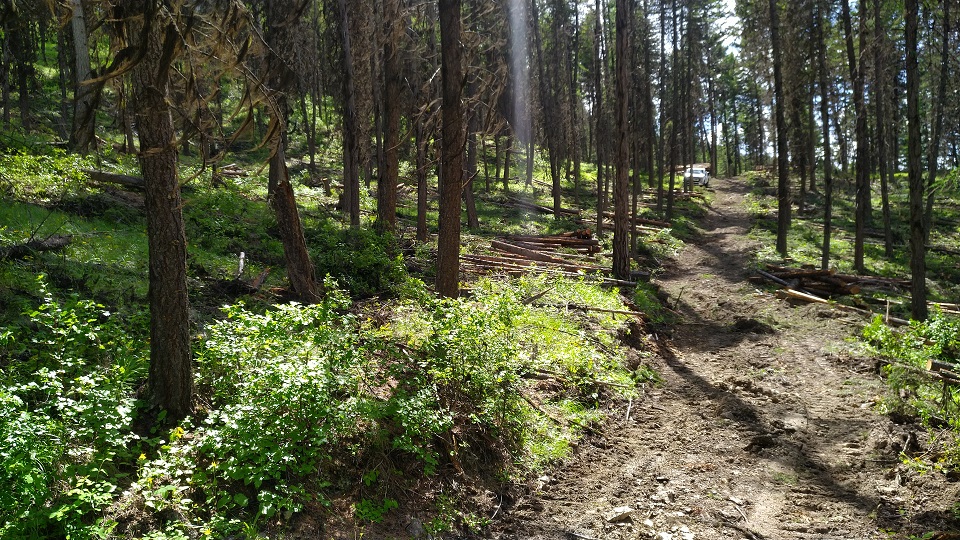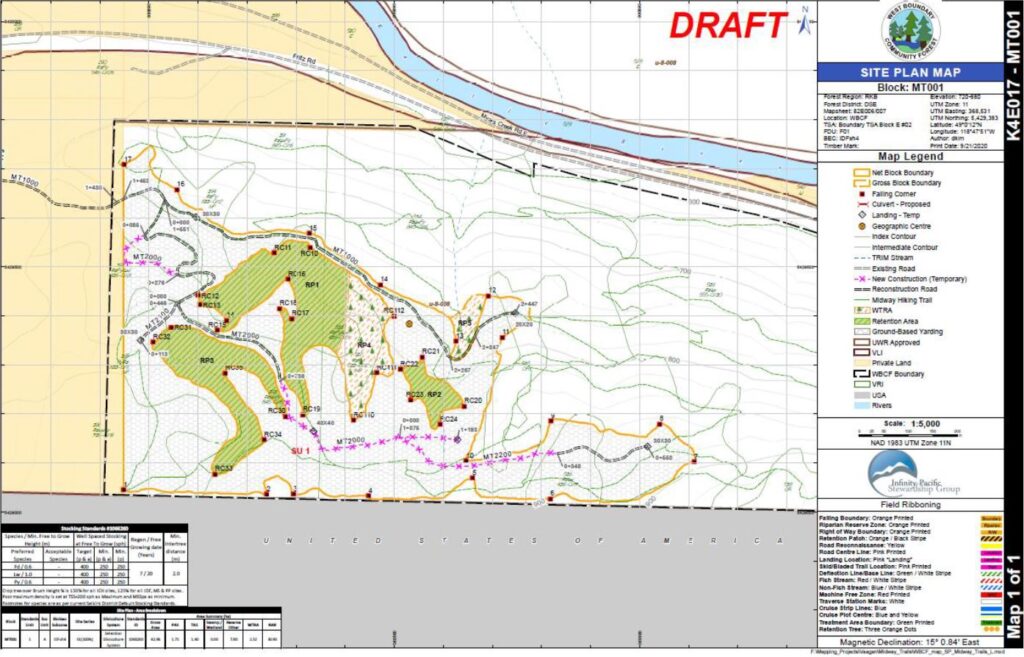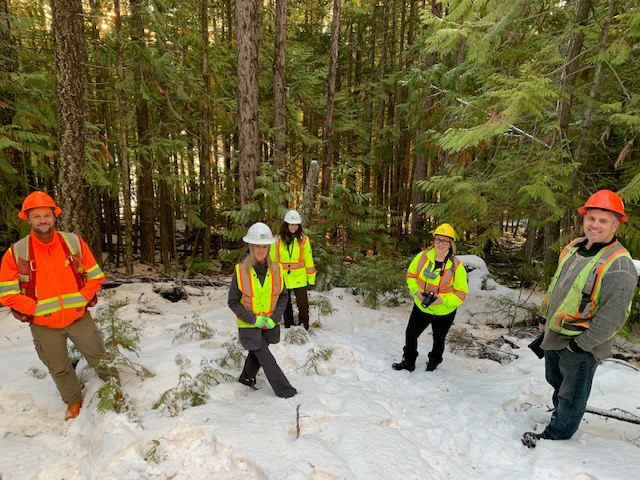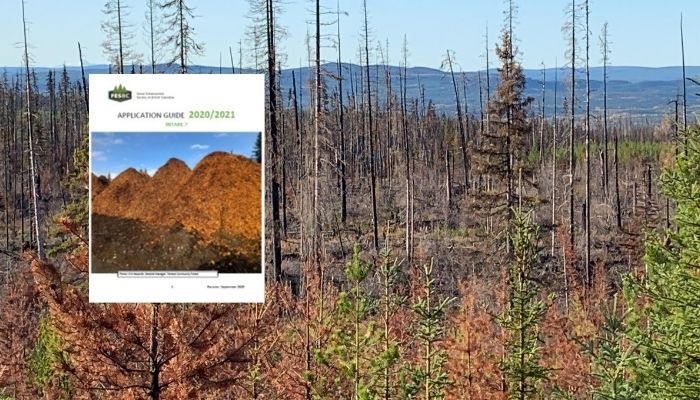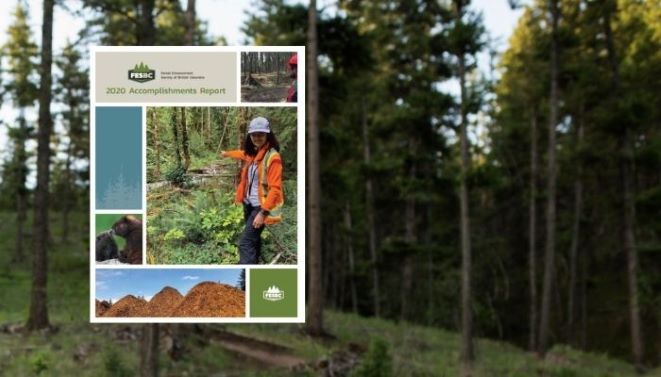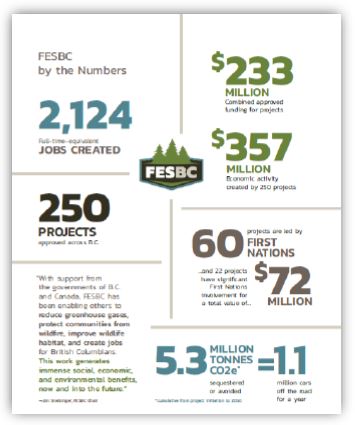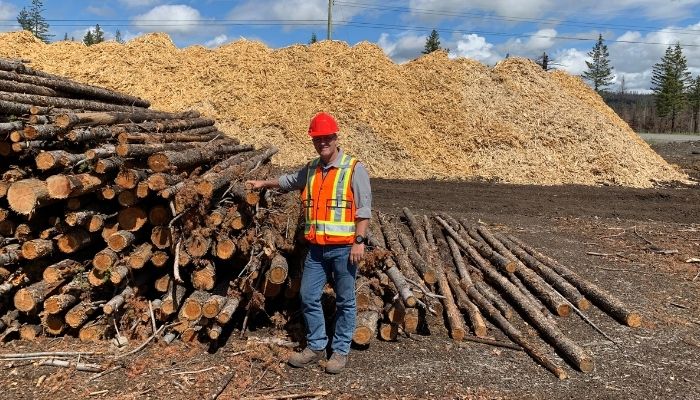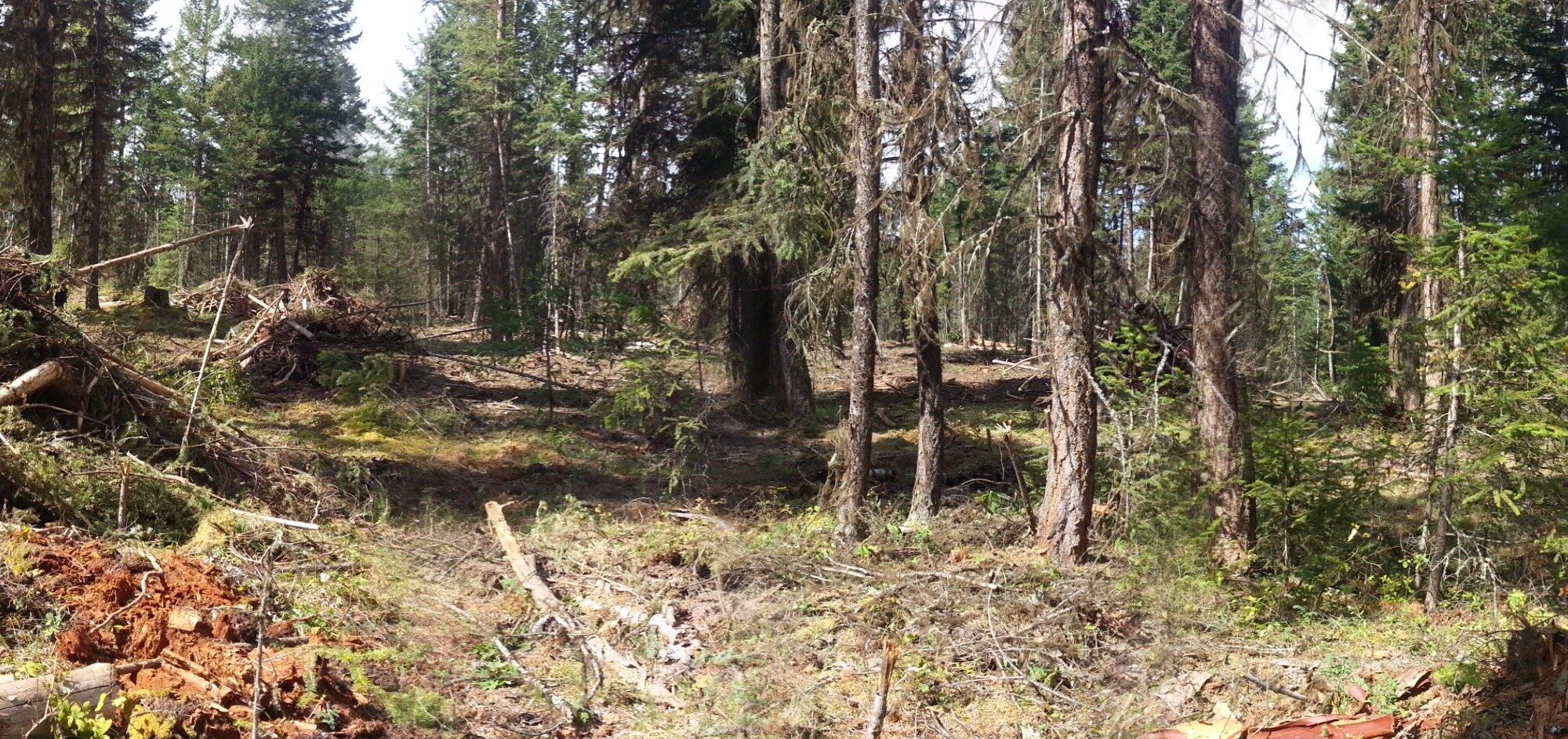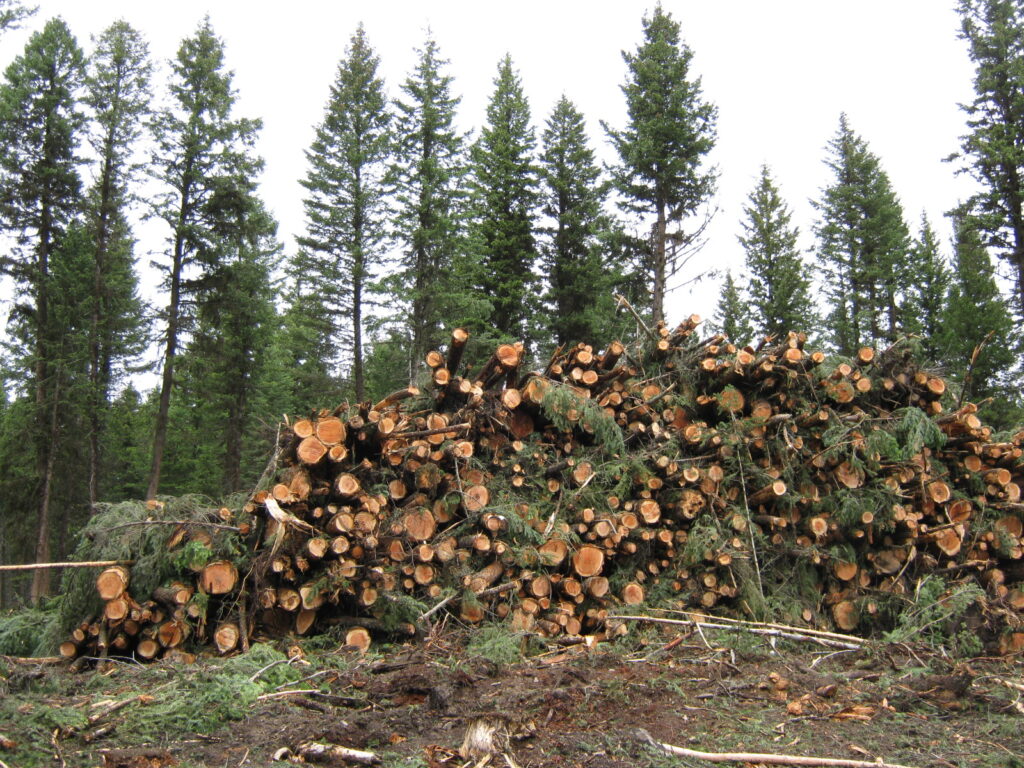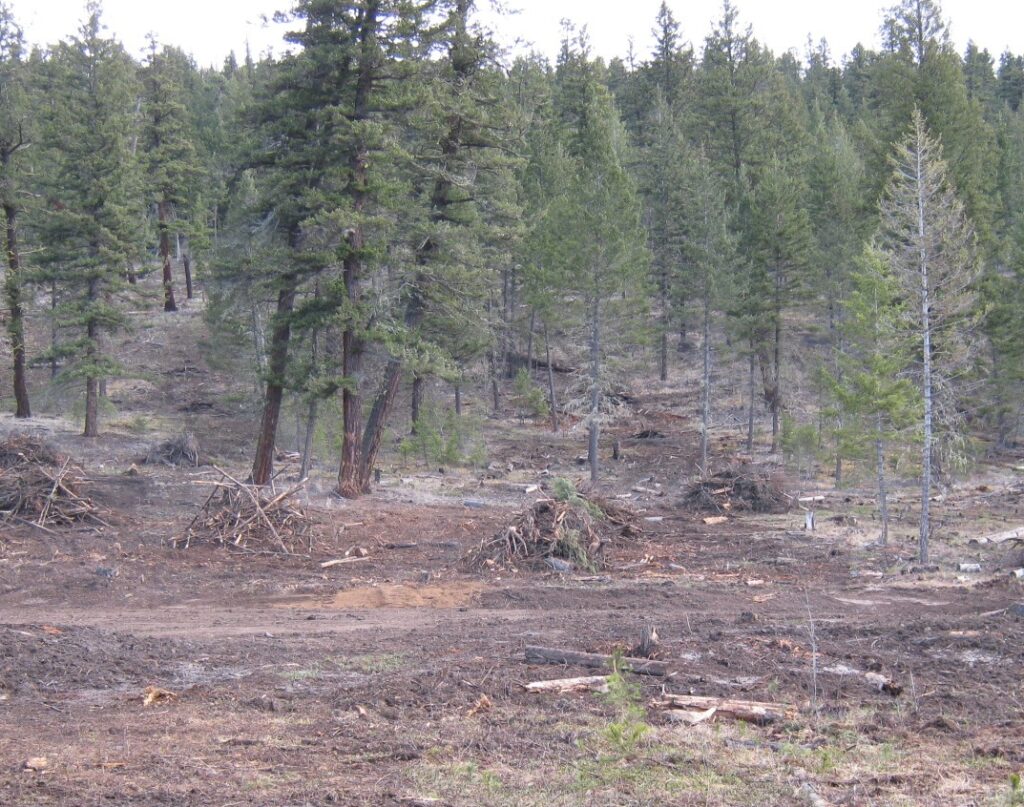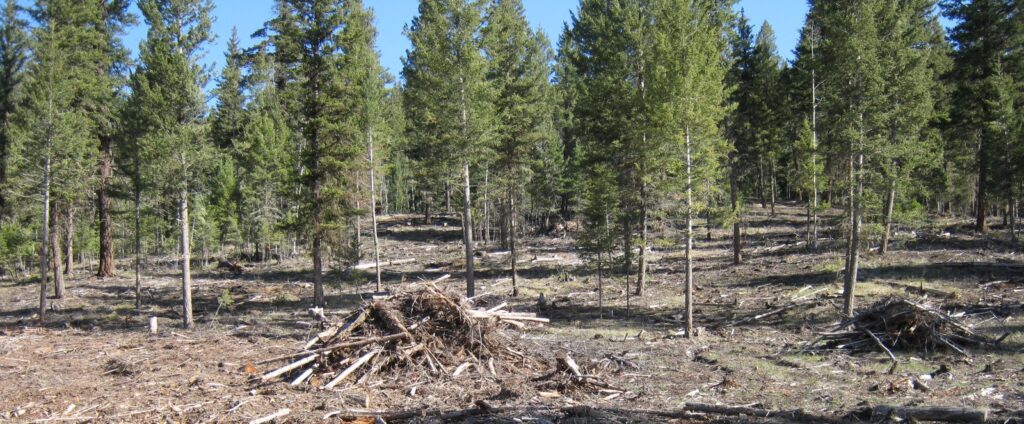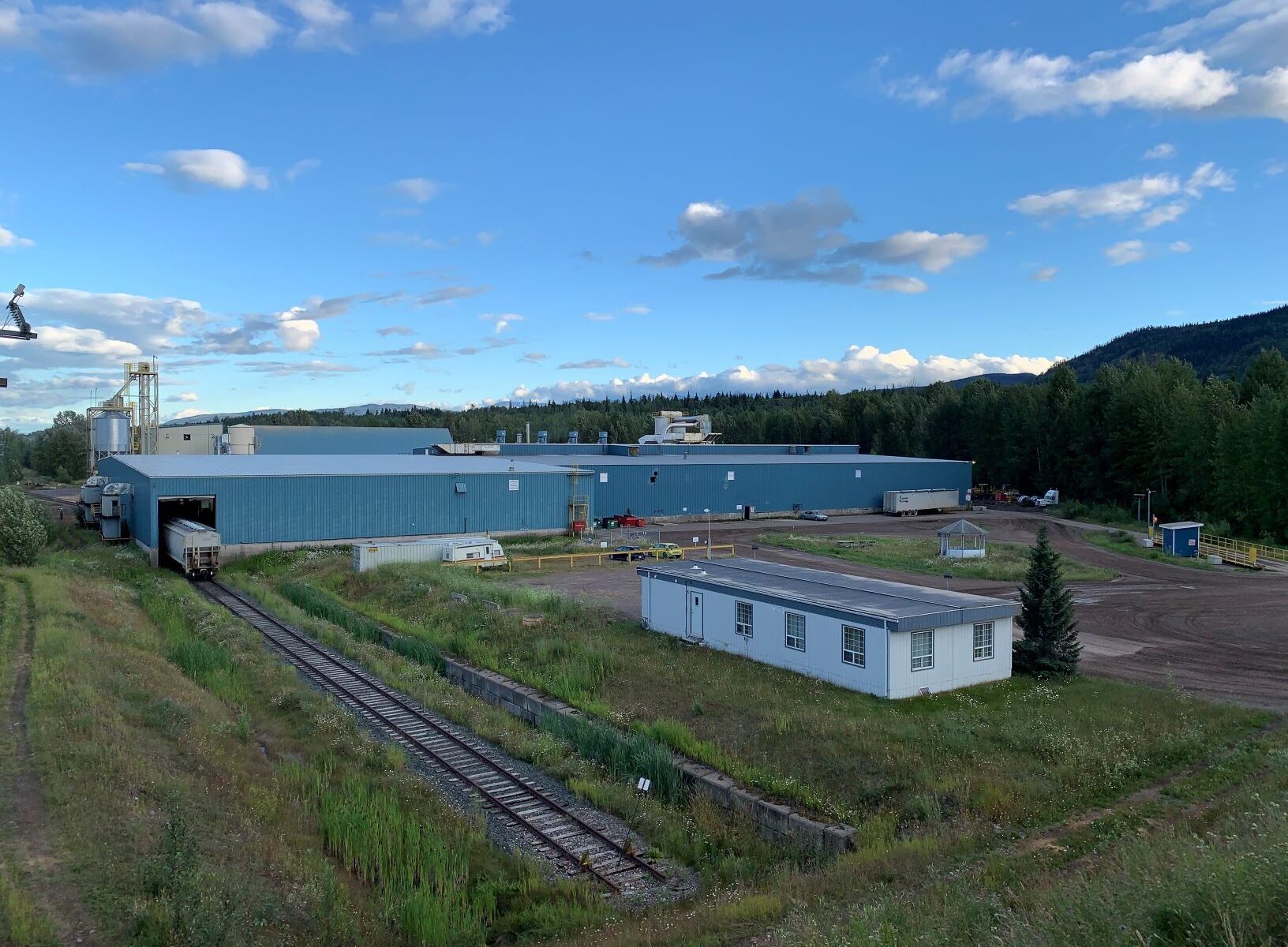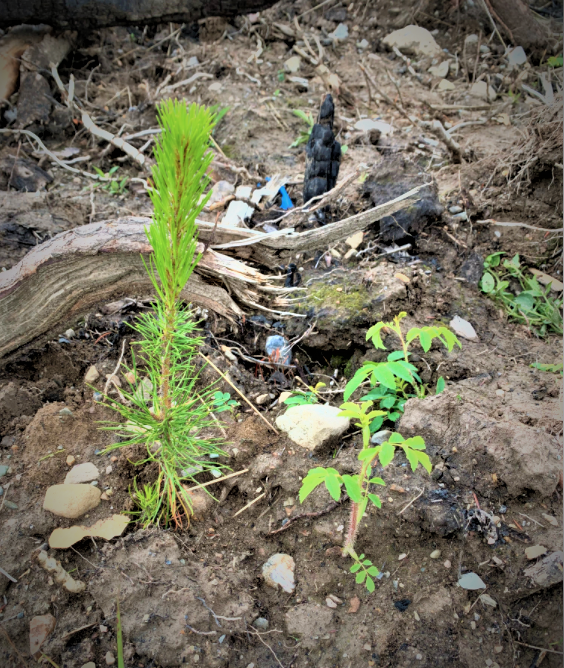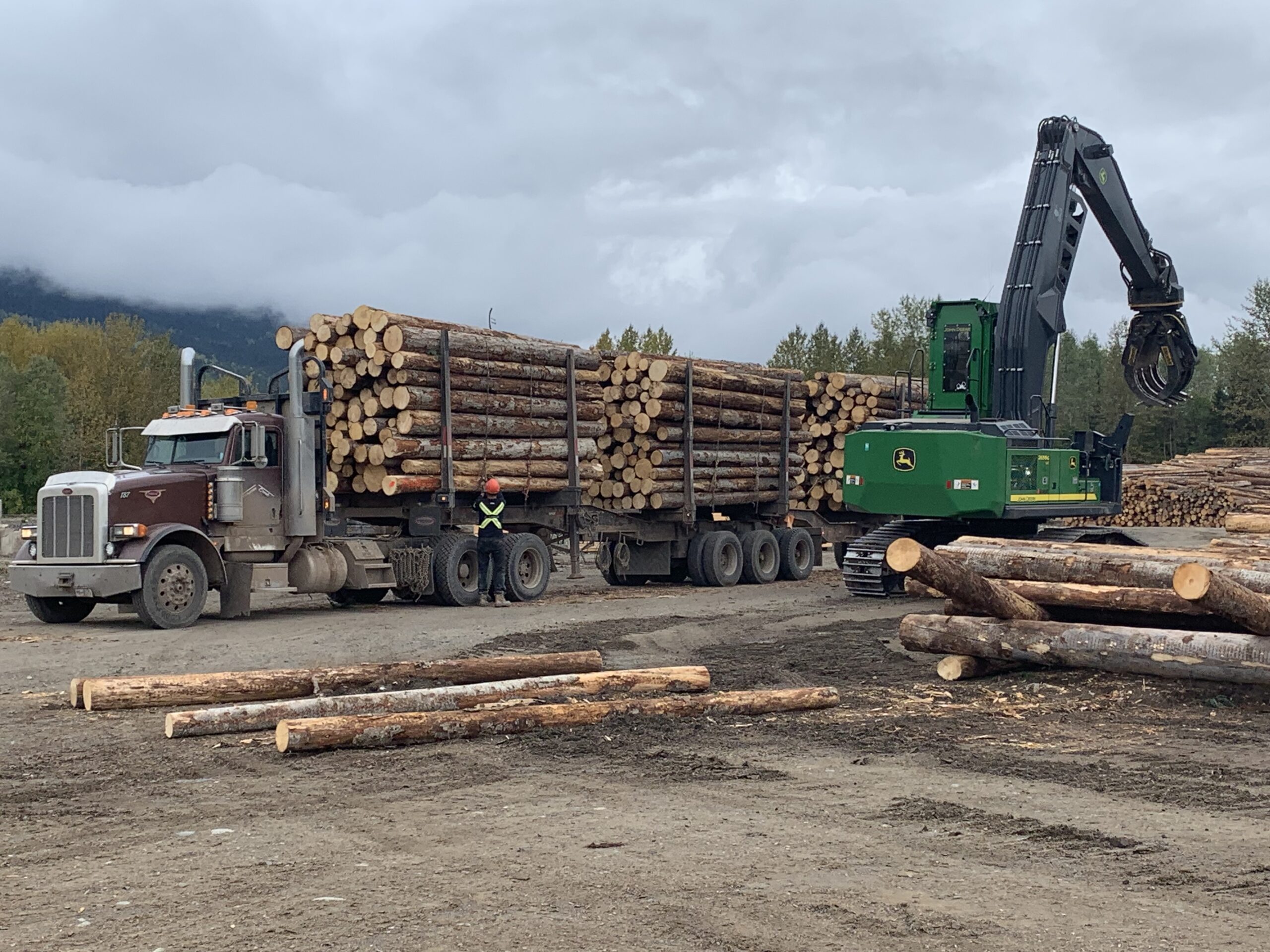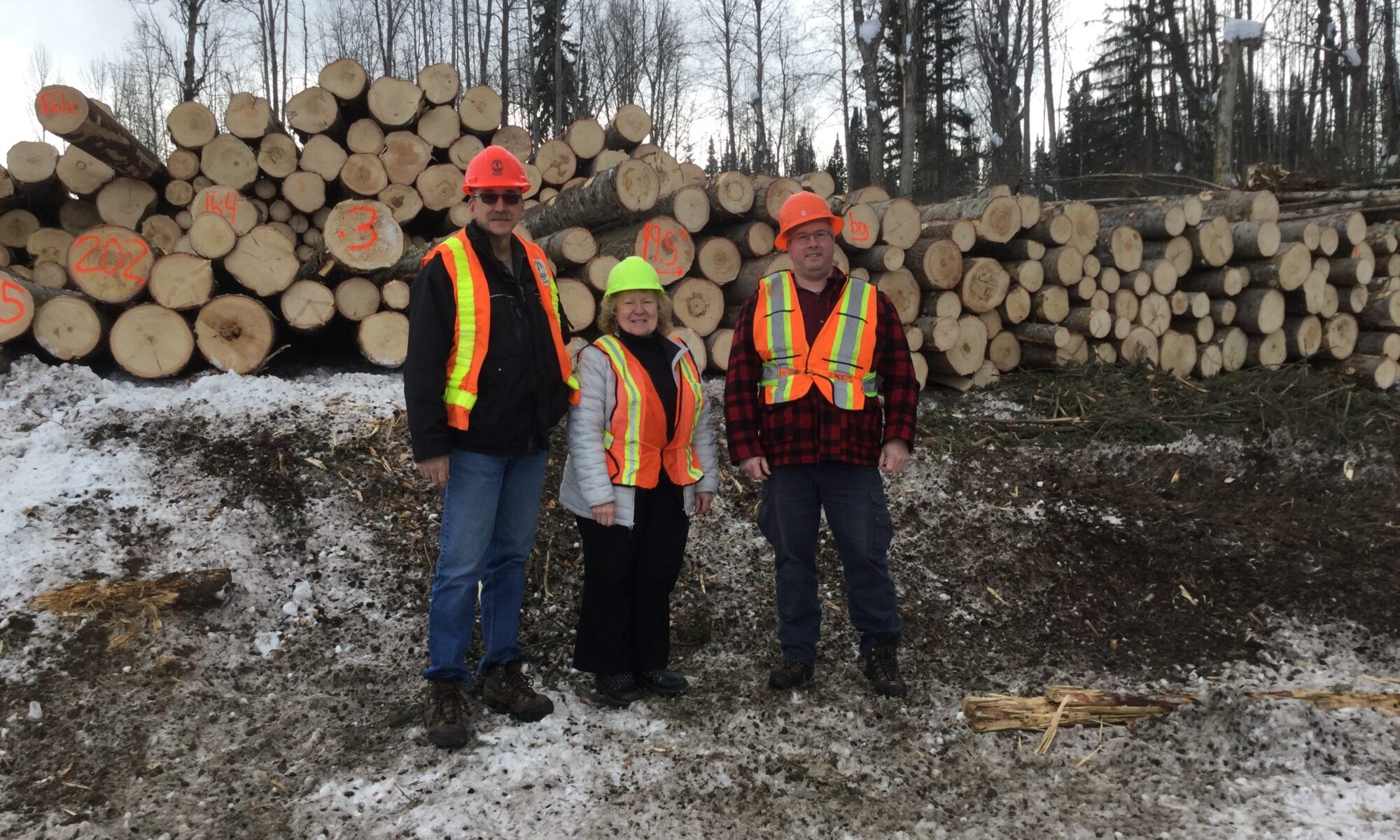Midway, B.C.: The small rural community of Midway is located on Highway #3 about one hour east of Osoyoos. The town may only have a population of 649 people, but the community hosts thousands of visitors throughout the year who venture into the West Boundary Community Forest (WBCF) to hike, bike or snowshoe the extensive Midway Trails network. As locals, visitors, and school groups are actively out in the community forest, the WBCF Board understood how critical it was to proactively start looking at ways to improve the health of the forest for future generations and to start removing dead and fallen trees that could pose a catastrophic wildfire threat.
“This project has been a community effort,” said Dan Macmaster, Fibre Manager for Vaagen Fibre Canada and Forest Manager of the WBCF. “Our team at Vaagen worked to develop the prescription, and then supervise and implement the work using funding dollars provided by FESBC and the WBCF. This project is on actively used trail systems, so it was important to engage the community to ensure their involvement and buy in, including our First Nations partners, in the planning and implementation phases.”
The Osoyoos Indian Band and their forestry team provided archaeology assessments at the outset and members of the Band have been involved in post-harvest treatments like bucking and piling trees.
“This project work has been a very light touch on the landscape using an innovative harvesting/forwarding system to minimize soil disturbance. Plus, we are doing hand treatments where possible. We’ve even had school groups come in to learn more about their community forest and to do some of the hands-on work.”
Dan Macmaster, Fibre Manager Vaagen Fibre Canada, Forest Manager WBCF
The need for the project started in the summer of 2018 when a strong windstorm came through the southern Boundary region and blew over a vast number of trees. Through daily inspections by the Midway Trail Society volunteers, blowdown from the storm was noted as significant, and an aerial inspection by the WBCF verified the extent of the damage. Because the area is already susceptible to the Douglas-fir beetle, the downed trees needed to be removed to prevent further infestation in the local forest. The Mayors of Midway and Greenwood were very supportive of the project, and a Director of the WBCF Board has been hearing excellent reviews from local residents and community leaders alike.
“We are pleased to see the hard work of so many make an improved difference for our Community Forest and for the Midway Trails,” said Ross Elliot, Director on the Board of the WBCF. “We expressed early on to the Midway Trails Society members and to the residents of Midway and Greenwood who have joint ownership of this Community Forest that there was a lot of work to be done. The $94,200 in FESBC funding, in conjunction with a $139,500 contribution from the WBCF, has allowed us to get the work underway. Moving forward, we will continue to rely on our community volunteers to maintain the trails well into the future for everyone to enjoy.”
Noting the many benefits of the project is FESBC Operations Manager, Gord Pratt.
“Our team likes to see projects that request FESBC-funding cover a number of our purposes and this project is doing just that. Not only are excessive fuel loads being reduced to mitigate increased wildfire risk, but the work is making the forest healthier. This in turn helps create enhanced wildlife habitat, maintain forest recreation opportunities, and ensures timber supply for future generations. When marginal stands can be harvested and brought to the local mill, projects like this also create economic benefits, including jobs for the community.”
To see the project area in relation to the Midway Trails System, refer to the map below or visit the West Boundary Community Forest’s website
For a tour of the area following all Covid-19 safety protocols or an interview:
Dan Macmaster, RPF, Fibre Manager Vaagen Fibre Canada & Forest Manager West Boundary Community Forest
dmacmaster@vaagen.ca | 250.528.0344
For information on/or an interview with FESBC:
Aleece Laird, Communications Liaison, Forest Enhancement Society of BC
communications@fesbc.ca | 250.574.0221
